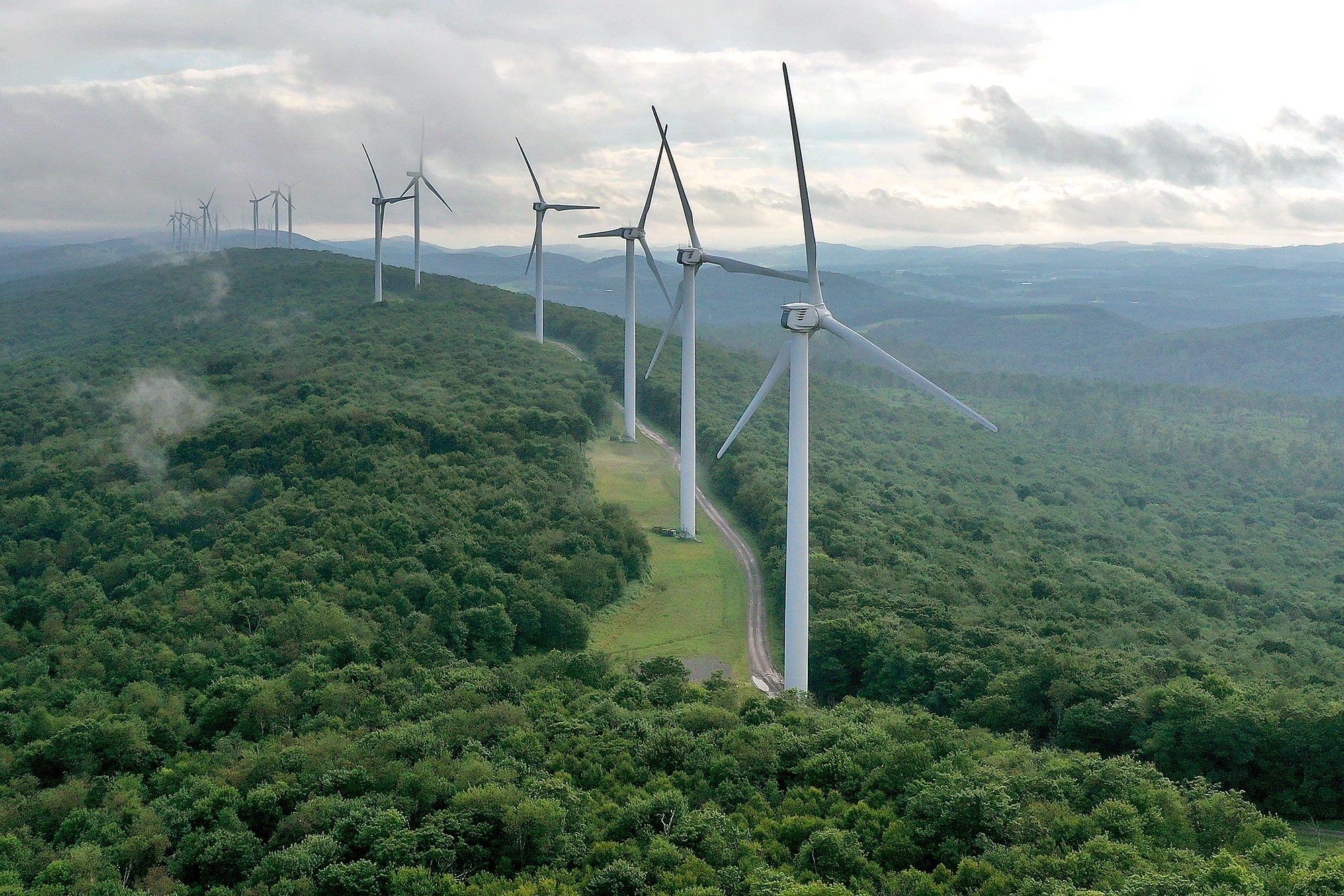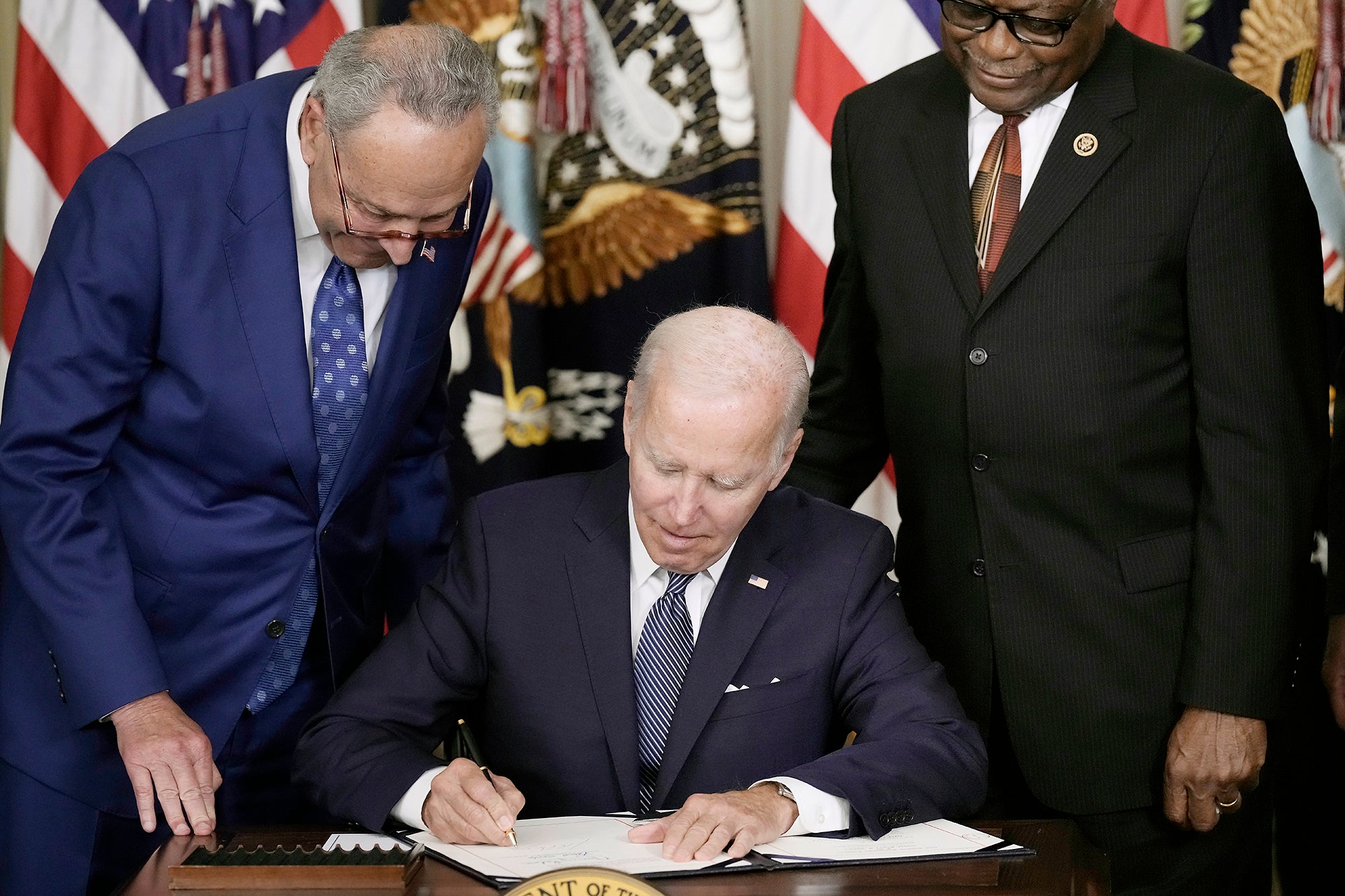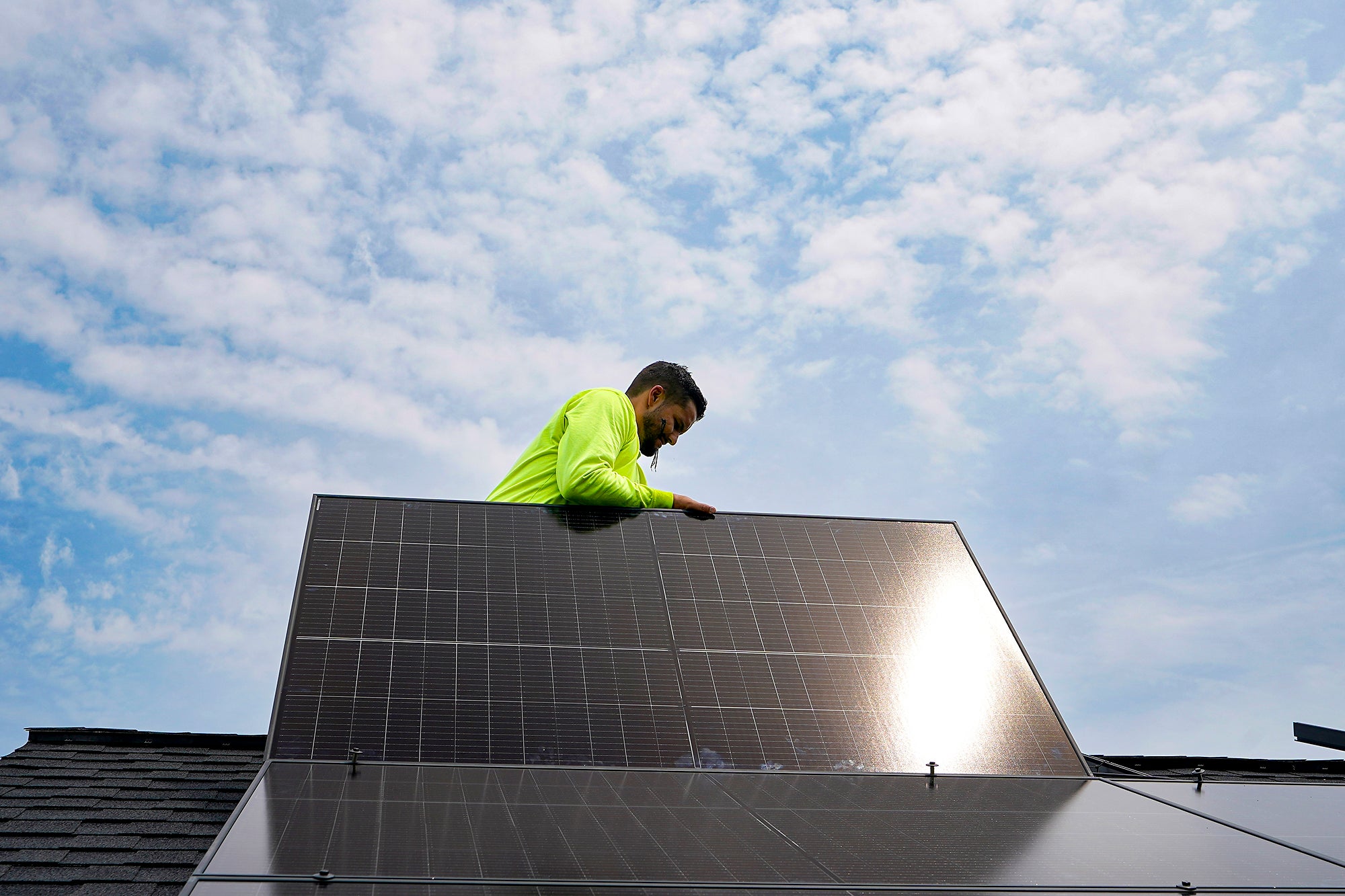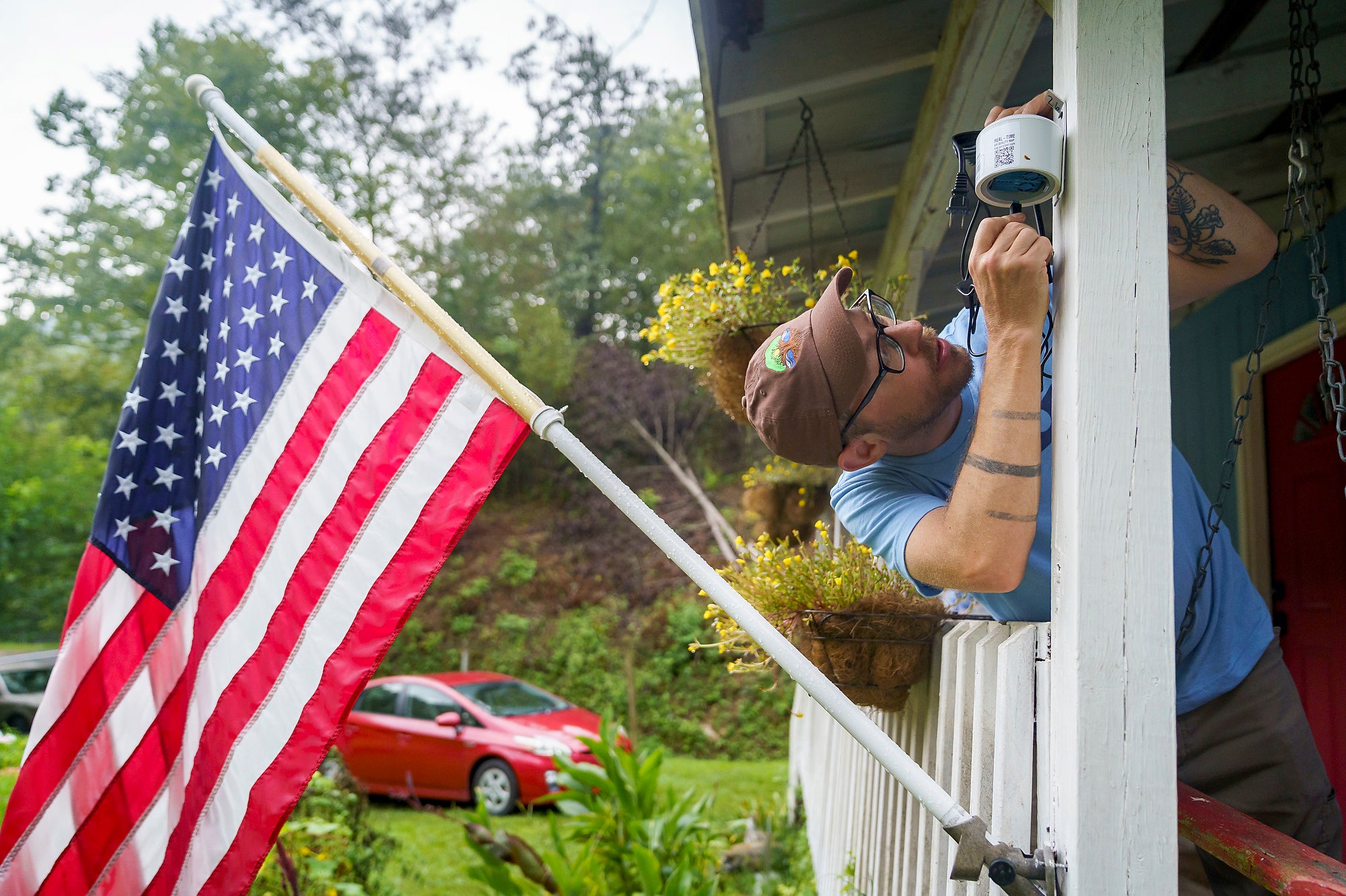Two Years Ago, We Passed the Biggest Climate Spending Bill Ever. Here’s What It Has Achieved.
We’re celebrating a booming clean economy, lower energy costs, a path forward to reducing harmful pollution, and more than 334,000 new clean energy jobs so far.

This page was published a year ago. Find the latest on Earthjustice’s work.
Two years ago, President Joe Biden signed a landmark $391 billion climate solutions investment bill — the Inflation Reduction Act (IRA). This once-in-a-generation legislation has supercharged the process of replacing our deadly fossil fuel economy with clean energy while investing in critical air monitoring technologies, pollution reduction programs, environmental justice priorities, and efficient permitting processes.
As the bill turns two, we can begin to measure its impact in terms of jobs created (334,000 and counting, with an economic value of $265 billion) and investment in reducing harmful pollution ($27 billion to cut emissions and advance clean energy projects). If we build on the momentum of the IRA, a future that averts the worse effects of the climate crisis is within reach.

U.S. President Joe Biden, center, signs The Inflation Reduction Act with Senate Majority Leader Charles Schumer (D-NY) (L) and House Majority Whip James Clyburn (D-SC) in the State Dining Room of the White House August 16, 2022 in Washington, DC. (Drew Angerer / Getty Images)
While there is much to celebrate, this bill was a compromise and came at a cost to communities already facing the disparate impacts of pollution and the climate crisis. Earthjustice has said from the beginning that we will stand shoulder-to-shoulder with communities in Alaska, Appalachia, and the Gulf Coast and ensure they are not left behind in the energy transition. We remain committed to fulfilling that promise and fighting the law’s harmful provisions.
Let’s dive into some of the areas where funds from this climate legislation have been making the biggest difference.
Wind and solar energy

Solar panels being installed on the roof of a home in Frankfort, Ky., Monday, July 17, 2023. (Michael Conroy / AP)
For the first time ever, wind and solar power generated more electricity than dirty coal-fired power over the first five months of 2023. It happened again for parts of 2024, showcasing a shift in how this country powers itself. The increase in new solar and wind production has also contributed to a more reliable grid that has kept homes cool and families safe during this summer’s extreme heat.
- 135 new solar projects, and 50 new wind projects in development in the U.S. since the passage of the Inflation Reduction Act.
- $33.85 billion invested in solar projects, and $10.58 billion invested in wind projects.
In homes and communities
As large parts of the country are suffering under dangerous heatwaves, affordable clean energy access is more important than ever. The IRA’s funds have unlocked access to clean energy programs for millions of Americans, including communities of color and low-income communities who for too long have been disproportionately impacted by climate change and pollution.
- $8.8 billion in home energy rebate programs created by the IRA, providing funding for low-income families to electrify their homes and increase efficiency.
- $7 billion to fund solar projects in low-income communities made available through grants to states, tribes, municipalities, and nonprofits across the U.S.
- $117.5 million for air pollution monitoring projects so that communities know exactly what’s in the air they breathe, with specific funds for schools and those living near polluting industries.
- $3 billion for community-led projects in areas experiencing the disproportionate impacts of pollution and climate change.
- Up to $2,000 in tax credits for the purchase of a heat pump; and up to an $8,000 rebate on installation for low-income households.
Agriculture
Thanks to the 2022 climate legislation, funds to reduce greenhouse gas emissions from industrial agriculture have been put to use to reduce emissions and sequester carbon in the soil, allowing the United States Department of Agriculture (USDA) to advance climate-smart farming and forestry.
- $20 billion to help farmers and ranchers shift to sustainable practices like crop rotation and cover crops.
- $300 million for research into the climate impact of agricultural and forestry practices.
Transportation

BYD’s “Achiever” electric school bus. This model is made in California by union workers. (Courtesy of BYD)
The transportation sector is the largest contributor to U.S. greenhouse gas emissions, spewing massive amounts of toxic air pollution into communities across the country. Since the passage of the IRA, we’ve begun to transition the sector away from fossil fuels by investing billions in zero-emissions transportation.
- $3 billion to clean up air pollution at ports by installing zero emissions equipment and technology, with much of the funds going to portside communities that are breathing disproportionately high levels of toxic air pollution.
- $3 billion for the U.S. Postal Service to electrify its fleet of more than 217,000 vehicles, the largest government fleet in the nation.
- $5 billion in investment over 5 years for school districts to replace polluting school buses with clean vehicles.
- 155 new or expanded electric vehicle projects.
Fighting to secure a clean and just future
The Inflation Reduction Act’s transformative investments in clean energy have broken major ground in the fight against climate change, but the implementation hasn’t come without challenges.
From the beginning, Earthjustice has worked hard to realize the tremendous positive potential of the IRA’s funds while preventing harmful fossil fuel-friendly subsidies. We fought alongside our partners against a dirty permitting side deal weakening the bill’s climate progress by mandating fossil fuel projects and further endangering frontline communities. Over the past year since the bill’s passage, we’ve continued to fight for removing other harmful provisions in the IRA that hold clean energy development on our public lands hostage to continued oil and gas leasing.
When Senator Manchin attempted to ram a dirty permitting deal through Congress, we stood with our environmental justice partners and successfully fought back. Since then, we’ve fiercely opposed multiple efforts in Congress to gut bedrock environmental laws like the National Environmental Policy Act (NEPA) that protect communities and give them a voice. We’ve also fought against using IRA funds to finance false solutions like dirty hydrogen projects that threaten our climate and health, and carbon capture and storage technologies that threaten to extend the life of fossil fuels and perpetuate the harms of pollution in overburdened communities.
In addition to fighting harmful provisions in the IRA, Earthjustice, in partnership with environmental justice organizations, helped advocate for directing the legislation’s funds towards programs like ‘Solar for All’ to fund solar projects in low-income communities.
On the Ground: Community projects

Willie Dodson, Central Appalachian Field Coordinator for Appalachian Voices, installs an air monitor onto a house in Wilson Creek, Kentucky. (Michael Swensen for Earthjustice)
The IRA has empowered communities to lead their own environmental justice and clean energy projects by committing billions of dollars in federal funding to go to local governments, air quality districts, tribes, and other organizations.
The former coal mining town of Keystone, West Virginia is one of the many communities benefiting from these grants. An initiative called the Upper South and Appalachia Citizen Air Monitoring Project received $118,000 to aid in setting up air monitoring equipment in Keystone and other locations across West Virginia, Virginia, Kentucky, Pennsylvania, and Tennessee where coal dust, natural gas compressor stations, landfills, chemical facilities, or some combination of the above have raised health concerns for years. The data collected from the devices have helped local residents understand the risks they face and empower them to advocate for stronger air quality standards.
In Eugene, Oregon, which has faced devastating damage from wildfires in recent years, the Northwest Youth Corps received $120,000 to train young people to clean up fire hazards such as dead vegetation on U.S. Forest Service lands. These are just a couple of the local projects that have been able to get off the ground because of the IRA.
This landmark climate legislation has given us the opportunity to make an enormous leap forward in the fight to preserve a livable planet. Earthjustice will never stop working to ensure that we seize this opportunity by implementing this climate legislation in the most powerful, just, and equitable way possible. Our climate, communities, and health cannot wait, and Earthjustice celebrates the arrival of a clean future.
Established in 1989, Earthjustice's Policy & Legislation team works with champions in Congress to craft legislation that supports and extends our legal gains.